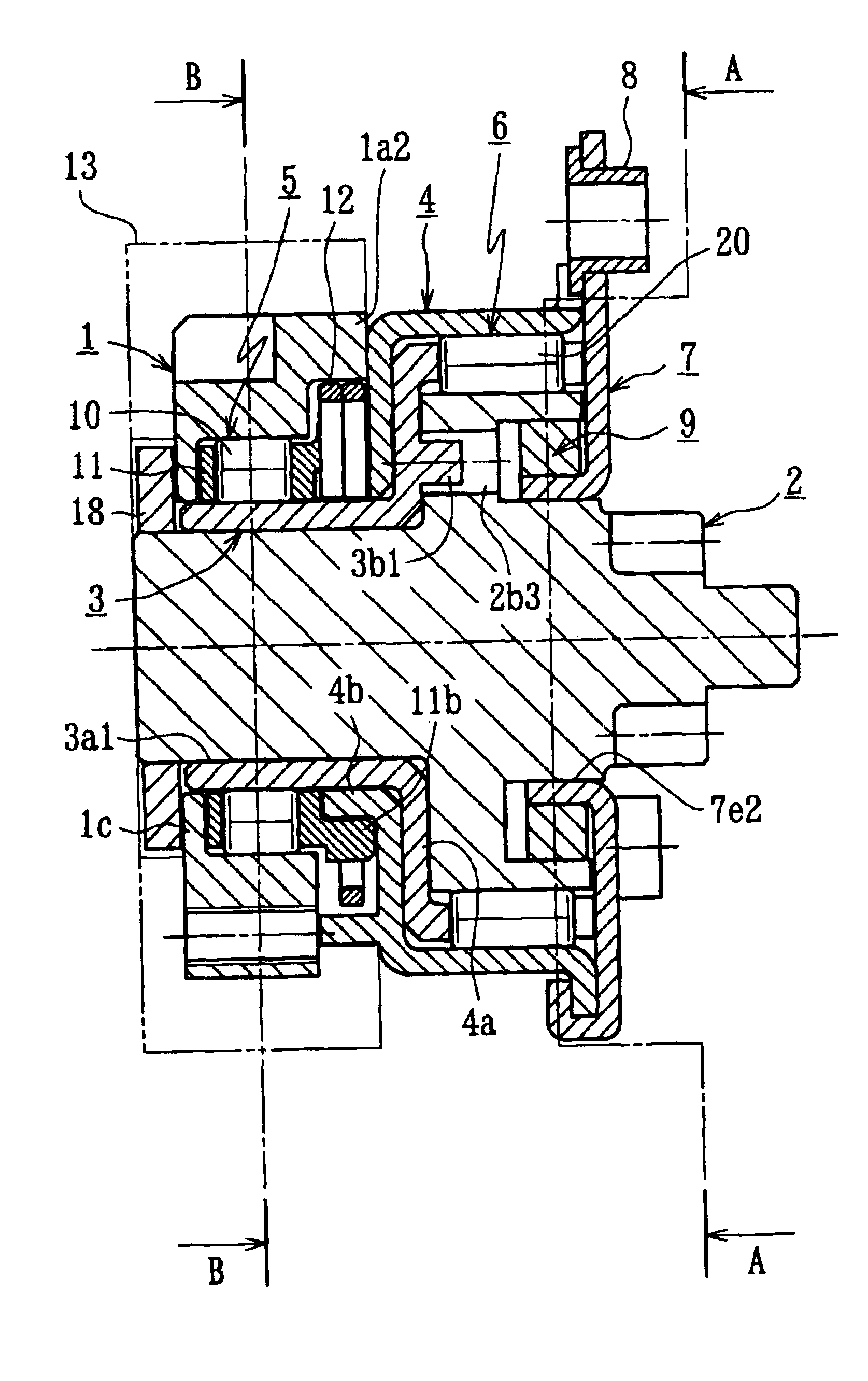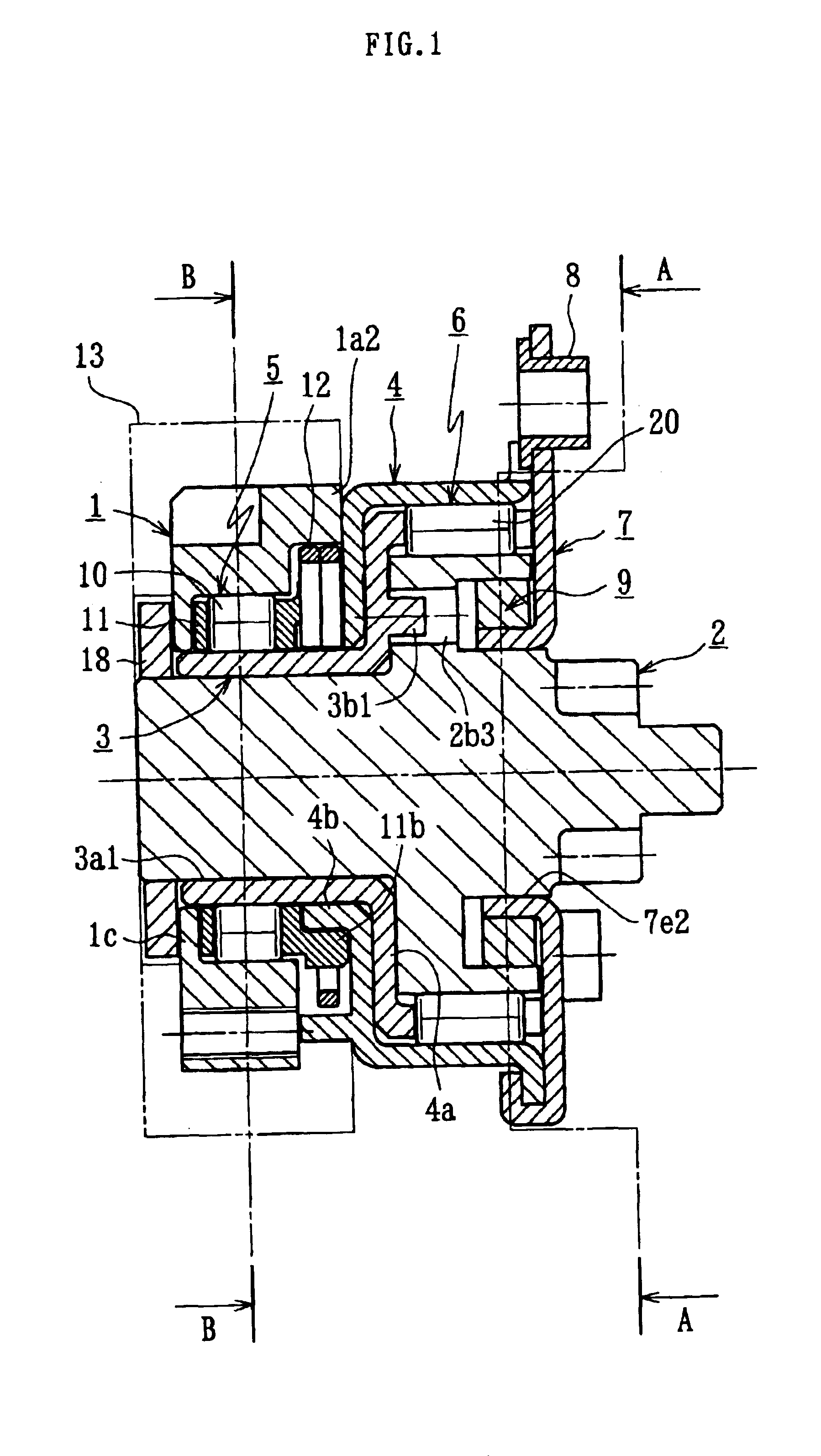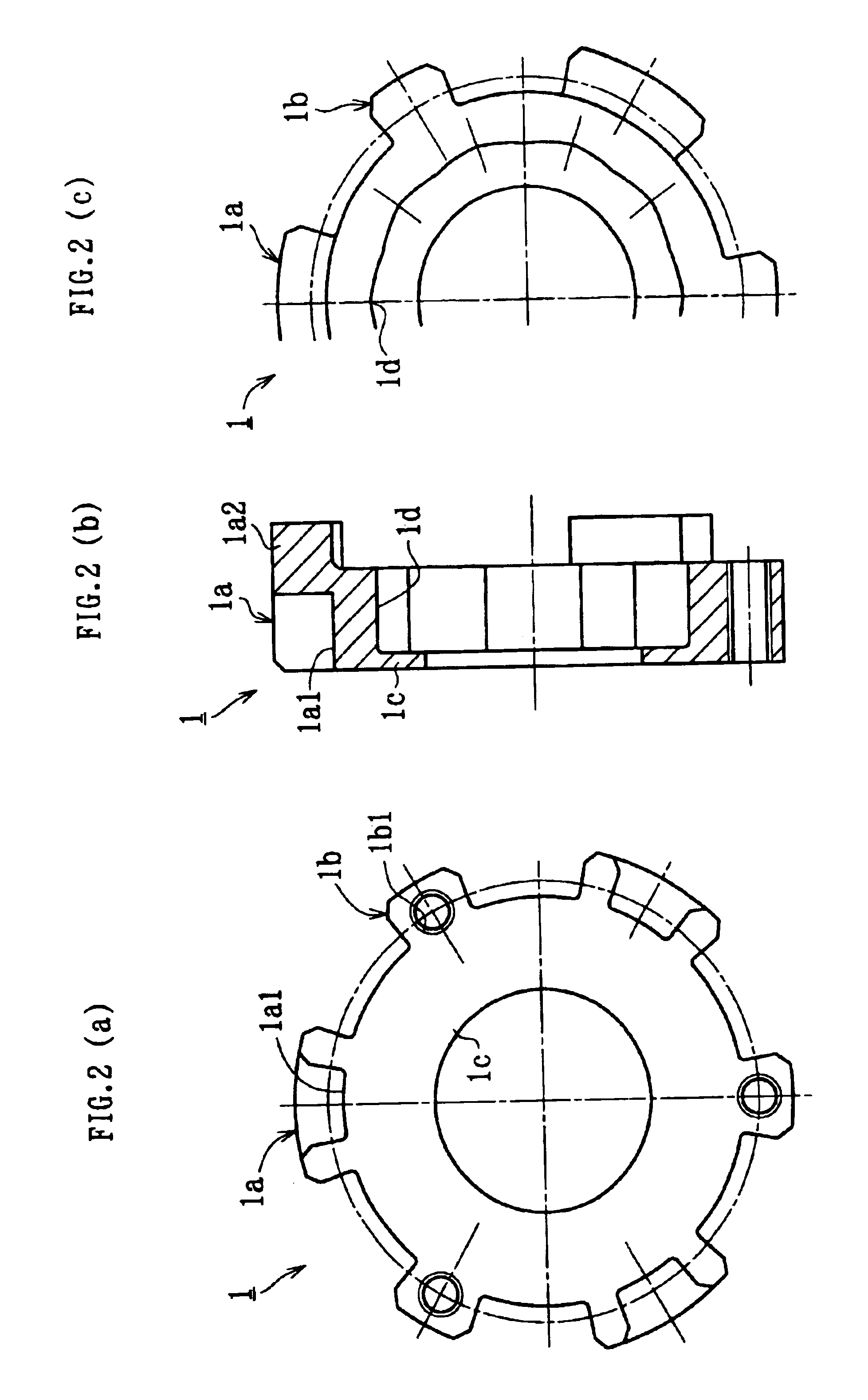Clutch unit
a technology of clutch unit and rotary knob, which is applied in the direction of chairs, movable seats, transportation and packaging, etc., can solve the problems of reducing the frictional resistance of slipping, limiting the design of vehicle body and seat, and requiring a complex structure, so as to improve the frictional resistance to slippage, increase the oil film strength, and improve the effect of oil film formation
- Summary
- Abstract
- Description
- Claims
- Application Information
AI Technical Summary
Benefits of technology
Problems solved by technology
Method used
Image
Examples
first embodiment
[0142]FIG. 1 shows the overall structure of a clutch unit according to the present invention. The clutch unit comprises an outer ring 1 serving as an input-side member, an output shaft 2 serving as an output-side member, an inner ring 3 serving as a control member, an outer ring 4 serving as a stationary-side member, a first clutch part 5 interposed between the outer ring 1 and the inner ring 3, and a second clutch part 6 interposed between the outer ring 4 and the output shaft 2.
[0143]FIG. 2 shows the outer ring 1, which serves as an input-side member. The outer ring 1 has a plurality of protruding ribs 1a and 1b, for example three each, as in the illustrated example, at spaced intervals around the outer circumference thereof. One end portion of the rib 1a in its axial direction is divided into two by a recess 1a1, while the other end thereof extends from the end of the outer ring 1 along the axis for forming a protrusion 1a2. Each of the ribs 1b has a screw hole 1b1 formed therein...
fourth embodiment
[0183]FIG. 22 shows the entire structure of a clutch unit according to the present invention. The clutch unit of this embodiment comprises an outer ring 1 as an input-side member, an output shaft 2 as an output-side member, an inner ring 3 as a control member, an outer ring 4 as a stationary-side member, a first clutch part 5 arranged between the outer ring 1 and the inner ring 3, and a second clutch part 6 arranged between the outer ring 4 and the output shaft 2.
[0184]FIG. 23 shows the outer ring 1, as the input-side member. A plurality (three, for example) of ribs 1a, a plurality (four, for example) of ribs 1b, a plurality (two, for example) of ribs 1e, and one or more ribs 1f protruding outward are formed on the outer periphery of the outer ring 1 at predetermined circumferential intervals. An axial end portion of each rib 1a axially protrudes from an end of the outer ring 1, thereby forming a protruding portion 1a2. In addition, the outer periphery of any one of the three ribs 1...
fifth embodiment
[0234]FIG. 49 shows a clutch unit which is the input-side part of the clutch unit (FIG. 54) according to the present invention to be described later, exclusively configured as an independent clutch unit.
[0235]This clutch unit comprises an outer ring 1′ as an input-side member, an inner ring 2′ as an output-side member, a plurality of rollers 3′ as engaging members, a retainer 4′ for retaining the rollers 3′, and an elastic member attached to the retainer 4, such as a centering spring 5′.
[0236]The outer ring 1′ is composed of a first thin member 1A′ shown in FIG. 50 and a second thin member 1B′ shown in FIG. 51. These thin members 1A′ and 1B′ are both fabricated by press-forming a steel plate. Incidentally, for example, the second thin member 1B′ may be made of a molded product of resin or the like if necessary.
[0237]The first thin member 1A′ comprises a cylindrical portion 1Ab′ having a plurality of cam surfaces 1Aa′ formed on an inner periphery thereof at regular circumferential in...
PUM
 Login to View More
Login to View More Abstract
Description
Claims
Application Information
 Login to View More
Login to View More - R&D
- Intellectual Property
- Life Sciences
- Materials
- Tech Scout
- Unparalleled Data Quality
- Higher Quality Content
- 60% Fewer Hallucinations
Browse by: Latest US Patents, China's latest patents, Technical Efficacy Thesaurus, Application Domain, Technology Topic, Popular Technical Reports.
© 2025 PatSnap. All rights reserved.Legal|Privacy policy|Modern Slavery Act Transparency Statement|Sitemap|About US| Contact US: help@patsnap.com



